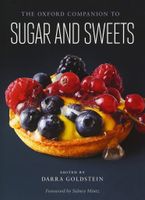Advertisement
Croissant
Appears in
Published 2015
Few foods have such potent emblematic power. Although produced internationally, croissants evoke France, bringing to mind visions of beret-wearing Frenchmen dipping their morning pastry into a steaming bowl of café au lait. Fewer foods still have histories as murky and steeped in erroneous culinary “fakelore.” The most frequently repeated legend attributes the invention of the croissant to Viennese bakers, who during the 1683 siege of Vienna by the Ottoman Turks purportedly created a pastry inspired by the crescent of their enemy’s flag. Alternatively, this same tale is recast during the Ottoman siege of Budapest of 1686.


